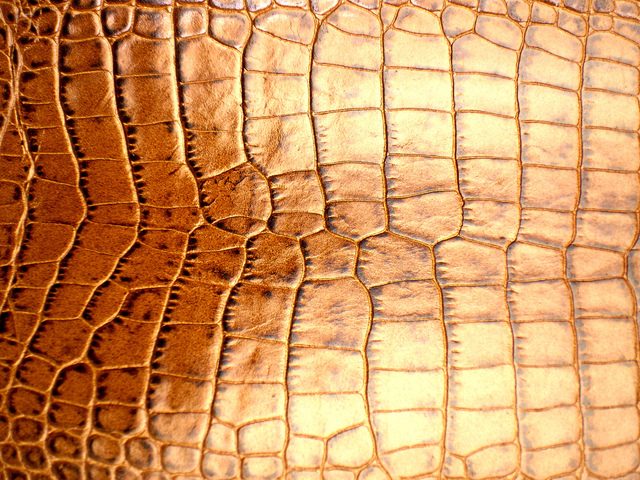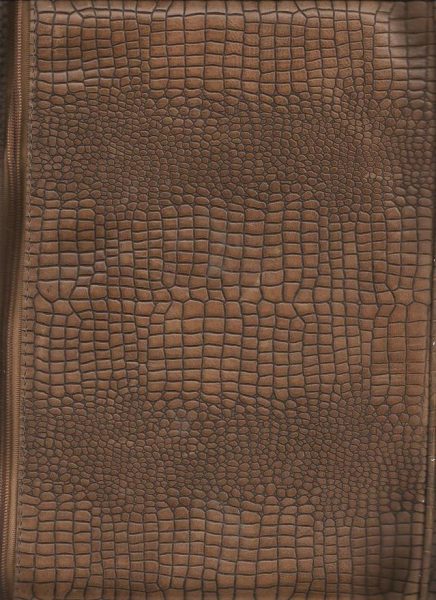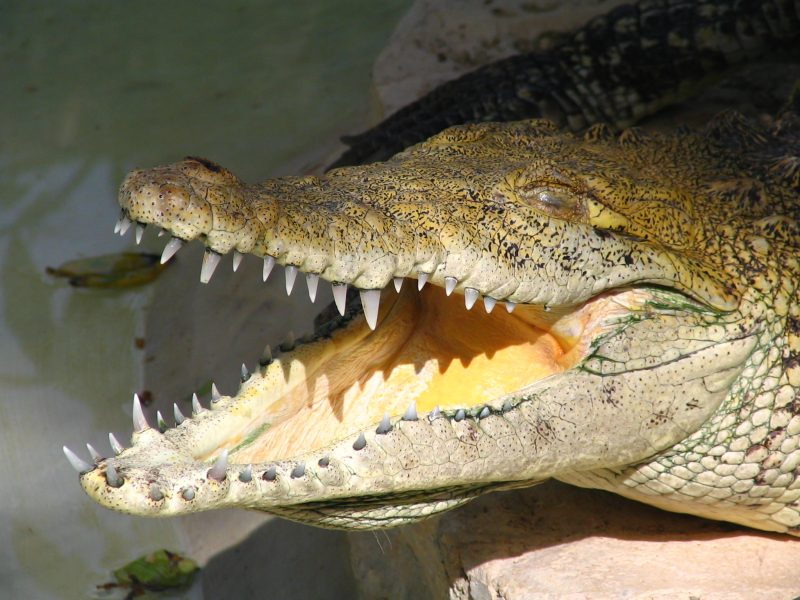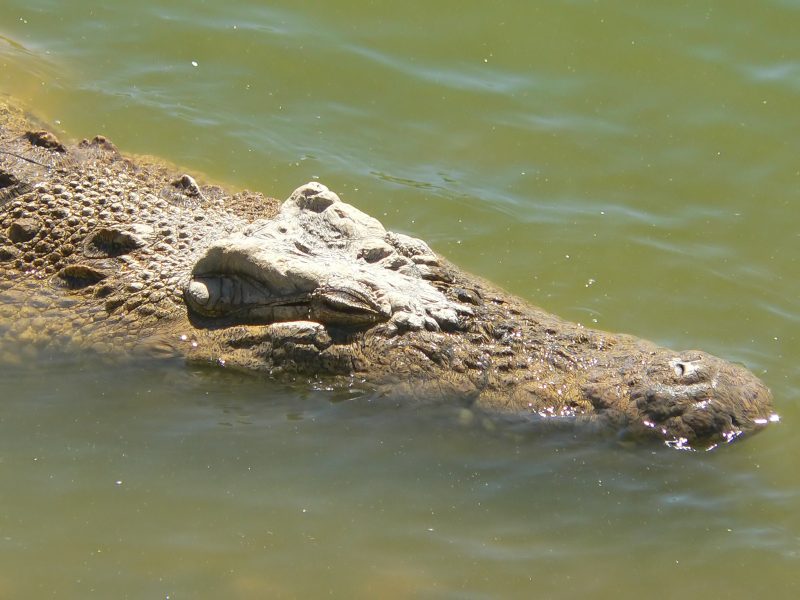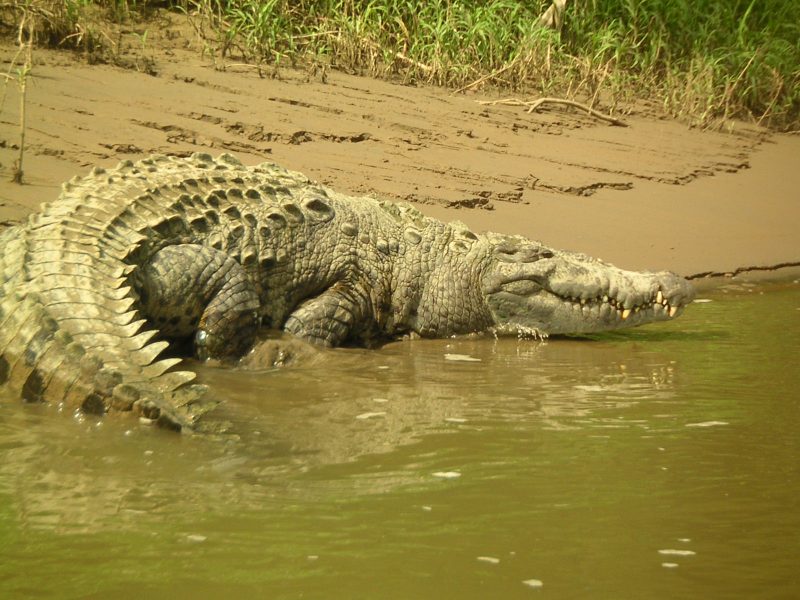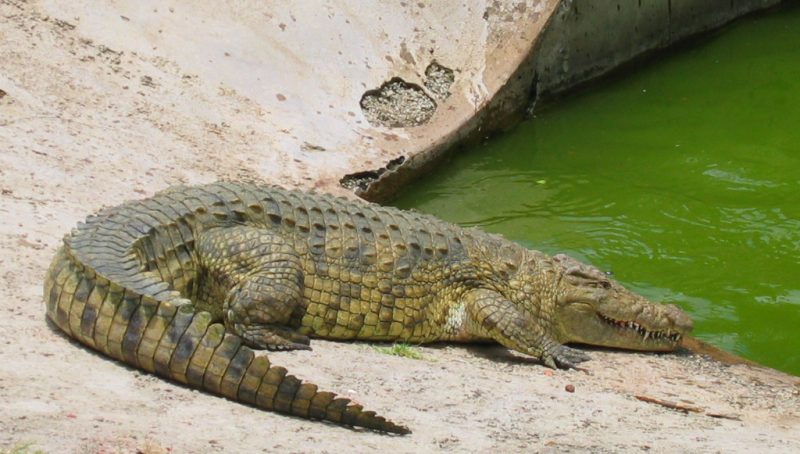Leather Making Process Using Crocodile Skin
Leather may be the simplest manufactured material in prehistoric times. But manufacturing leather in modern days using natural and synthetic tans and a variety of treatments is full of complications. The exact procedures, chemicals, and equipment used are subject to variation and change between tanneries. Crocodile leather passes through many convoluted stages, and routine treatments like rinsing, washing, draining, or partial drying often separates the processes.
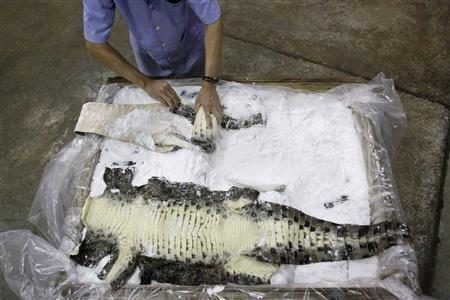
A factory worker displays a crate containing crocodile skins preserved in salt and ice at a crocodile leather tannery in Singapore September 30, 2008. Source: Reuters
Soaking to clean
The initial preparation of crocodile skins for tanning happens in the beam house. It starts by first soaking the skin to clean and remove salt and preservatives. It allows the skin to dissolve out some soluble proteins and to reabsorb its lost water. Inadequate soaking can cause problems, but too much can rob it of desirable substance. Tanneries use paddles to soak ossified skins and pits to soak those skins intended for a classic finish. Treatment of similar type and size skins in batches ensures uniform soaking. Then a shaving machine stretches the skin and cleans the flesh side.
Treatment with chemicals
The next process called liming takes two days in which they treat the skins with chemicals in pits, paddles or rotating drums. A traditional method is to use slaked lime in temperate climates, and sodium sulfide at higher temperatures. Some tanneries also include other chemicals such as degreasing agents and common salt. This process dissolves away the epidermis and scales, convert the fats into soaps, make dark pigments soluble and open up the skin structure in preparation for bleaching.
Neutralization from liming
During liming, the skins become strongly alkaline. Hence to get rid of it, the skins go through a partial neutralization using ammonium salts. Skins at this stage are sensitive to abrasion and can affect the condition of the skin, especially the swelling of the fibers. Therefore, they require only occasional paddling.
In the bath
The skins remain immersed in enzymes which act upon the hide proteins and gives them the required softness, pliability and elasticity. Classic crocodile skins do not need much of this process as they must remain firm for a smooth and perfect finish.
Dual bleaching procedure
There are two stages in bleaching which occurs in a revolving drum. The first step uses potassium permanganate, and the second stage uses a solution of sodium bisulfate. Each process takes less than an hour. An oxidative bleach is preferable as it does not affect the fiber structure and allows a higher tear-strength.
Acid bath treatment
Next phase is the pre-tanning preparation of the skins using minerals. This step is an acid bath treatment of the skins using hydrochloric acid with a slight agitation. This process takes several days.
Tannage of skin
The dermis of the crocodile skin contains interwoven fiber bundles which in turn consist of collagen with a high tensile strength. The tannage coats the collagen fibers making them heat- and decay-resistant as well as replaces water in the skin. The tanning agent determines the quality of the leather. With crocodile skins, chrome tans, as opposed to plant or vegetable tans, produces better results. An accurate control of chrome tannage gives uniform results and better properties. After three days of chrome tanning in drums, the skins transform into a blue wet chrome leather. ‘Wet blue stock’ is the industry term for this, and at this stage, they are chemically very stable. So, they drain the wet blue stock of surplus moisture and store them for many months in plastic sheeting.
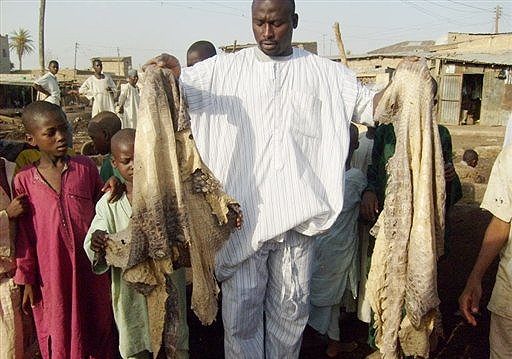
Surely amateurs can make reasonably good leather because the core operations are standard Source: phys.org
Shaving for uniformity
At this juncture, a shaving machine shaves the tanned leather to a uniform thickness. It shears the little skins to less than 1 mm in diameter.
Neutralizing or sweetening
After shaving, a neutralizing process treats the leather in a drum of sodium bicarbonate for about an hour which completes the tannage. However, following tanning, they can also remain in the wet state on a rack, which can increase the bond between the corium fibers and the chrome tanning agent.
Finishing with re-tannage
The next process is re-tannage, which will be in a drum using synthetic tanning materials, at the end of which the color of the leather becomes light. It is a short process involving one and a half hours.
Lubrication of leather
Synthetic fat liquors are used for crocodile skins to loosen the leather, which penetrates it during two hours in the drum.
Removal of moisture
Drying is an important process. Particular attention is given to ensure that the moisture is eliminated evenly and not in patches. After this, sorting of the leathers called ‘crust stock’ takes place in preparation for dyeing.
Coloring with dye
The dry stock is wetted back by soaking in a suitable wetting agent. After that, they are prepared chemically for different colors. Then they are fat-liquored again. Coloring with a dye in the drum that takes a few hours is a very skilled operation that requires proper attention to evenness, light-fastness, saturation, color matching, etc.
Ready for completion
After dyeing, a dry-shaving machine shaves the leathers giving it a domed or raised scale pattern. The high gloss finish occurs by using natural protein coatings together with synthetic seasonings so that they become permanently waterproof and hard. As the final step, they are glazed using a glazing machine.
Surely amateurs can make reasonably good leather because the core operations are standard. However, making the best crocodile leather is a long and skilled procedure as the tanning and finishing of the skins is very specialized. Also, the excellent features of the leather are due to finishing to the optimum combination of the required moisture and oil content, thickness, appearance, and suppleness. Hence, the raw material used must be worthy of the investment in labor and skill. If the raw materials used are of inferior quality, then the leather will be prepared, tanned and finished as appropriate.
5 Frequently Asked Questions About Crocodile Skin Processing
To receive a colourful digibook about crocodile with videos, images and text, please fill out the following form or simply email us on safaris@safari-center.com

